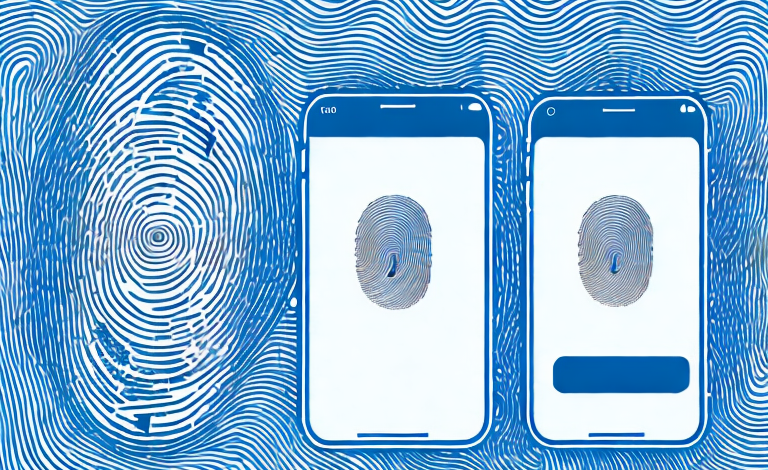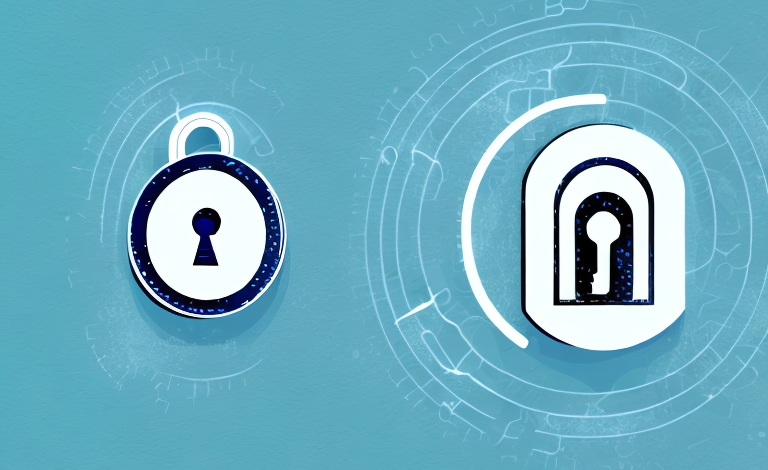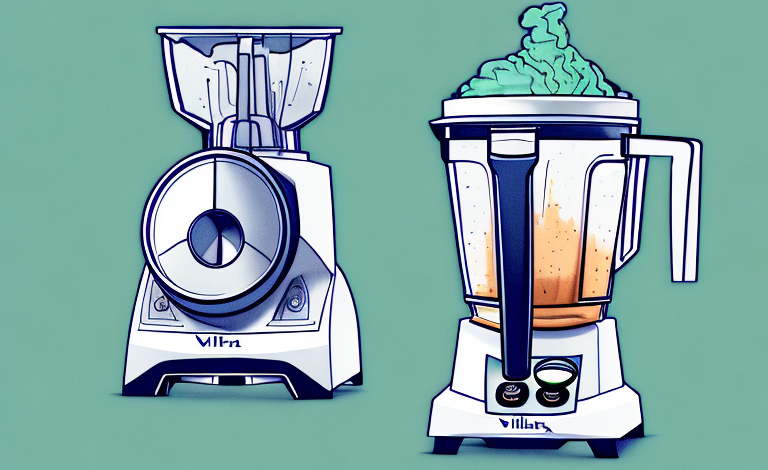The debate around which biometric authentication technology is better – face recognition or fingerprint, has been ongoing for quite some time now. Both technologies are designed to provide an additional layer of security to devices, ensuring that only authorized individuals can gain access. However, the differences between them are significant, and it is essential to understand these differences to determine which technology is better suited to your needs.
Exploring the differences between face lock and fingerprint technology
Face recognition technology scans the unique facial features of an individual, such as the distance between their eyes or the shape of their nose, to create a digital image that can be used to verify their identity. On the other hand, fingerprint authentication scans the ridges and valleys on an individual’s fingers and thumbs to establish their identity.
The primary difference between the two technologies lies in their accuracy and reliability. While both technologies are generally accurate, face recognition technology has been known to struggle in certain lighting conditions or situations where the user is wearing a mask or other facial covering. In contrast, fingerprint authentication is generally more reliable in these situations.
Another difference between the two technologies is their level of security. While both technologies are secure, fingerprint authentication is considered to be more secure than face recognition technology. This is because it is much harder to replicate someone’s fingerprints than it is to replicate their facial features.
Additionally, face recognition technology has raised concerns about privacy and surveillance. Some people worry that their facial data could be collected and used without their consent. Fingerprint authentication, on the other hand, is less controversial in this regard, as it is much harder to collect someone’s fingerprints without their knowledge or consent.
Comparing the accuracy and reliability of face lock and fingerprint systems
When it comes to accuracy and reliability, both technologies have their advantages and disadvantages. For instance, face recognition technology is more convenient since it does not require the user to make physical contact with the device. However, fingerprint authentication is considered to be more reliable, since the chances of two individuals having the same fingerprint are almost zero.
Another factor that can affect the accuracy and reliability of these technologies is age. Face recognition technology may struggle with recognizing individuals as they age, while fingerprints remain largely unchanged throughout a person’s life.
It is also worth noting that environmental factors can impact the accuracy of both face lock and fingerprint systems. For example, if a person’s face is partially obscured by a hat or sunglasses, or if their fingers are wet or dirty, the system may not be able to accurately authenticate their identity. Additionally, some facial recognition systems may struggle with recognizing individuals with darker skin tones, which can lead to issues with accuracy and bias.
The pros and cons of using face lock vs. fingerprint for device security
One of the main advantages of using face recognition technology is its convenience. Users do not need to physically touch the device to authenticate themselves, making it ideal for situations where their hands are occupied. On the other hand, fingerprint authentication may require more effort from users, but it is generally considered to be more reliable and secure.
In terms of security, both technologies are generally considered to be secure. However, face recognition technology may be vulnerable to spoofing attacks or false positives in certain situations.
Another advantage of using face recognition technology is that it can work in low light conditions, making it more versatile than fingerprint authentication. Additionally, face recognition technology can be used to unlock devices even when the user is wearing a mask, which is particularly useful during the COVID-19 pandemic.
However, one potential disadvantage of using face recognition technology is that it may not work as well for individuals with certain facial features, such as those with facial hair or glasses. In contrast, fingerprint authentication is generally more reliable for a wider range of users.
Understanding how face lock and fingerprint technology work
As mentioned earlier, face recognition technology works by scanning the unique features of an individual’s face, while fingerprint authentication scans the ridges and valleys on their fingers and thumbs. The digital image generated by these scans is then compared to a stored image to authenticate the user’s identity.
In both cases, the process of authentication takes only a few seconds and provides an additional layer of security to devices beyond traditional passwords or PINs.
One advantage of using face lock and fingerprint technology is that it eliminates the need to remember complex passwords or PINs, which can be difficult to recall and may be easily forgotten. This makes it a convenient and user-friendly option for individuals who struggle with remembering passwords or who frequently forget them.
Another benefit of using these technologies is that they are difficult to replicate or forge, making them more secure than traditional authentication methods. This is because each individual’s face and fingerprints are unique, and it is nearly impossible to replicate them accurately without the person’s knowledge or consent.
A detailed analysis of how face recognition systems operate
To understand how face recognition systems work, it is essential to understand some of the key concepts involved. One of these is the use of algorithms to analyze an individual’s face and extract unique features that can be used for authentication purposes.
Another key concept is the use of machine learning to improve the accuracy of these systems over time. By analyzing large data sets of faces, these systems can identify patterns and refine their algorithms to improve their accuracy and reliability.
It is important to note that face recognition systems are not foolproof and can sometimes produce false positives or false negatives. This can occur due to various factors such as changes in lighting, facial expressions, or even the angle at which the face is captured. Therefore, it is crucial to have backup authentication methods in place to ensure the security of sensitive information.
The benefits of using fingerprint authentication for mobile devices
The use of fingerprint authentication for mobile devices has several benefits. Firstly, it is considered to be more secure than traditional passwords or PINs since the chances of two individuals having the same fingerprint are almost zero.
Secondly, fingerprint authentication is relatively easy for users to set up and use. Once set up, users only need to touch their finger or thumb to the device’s sensor to authenticate themselves, making the process quick and convenient.
Thirdly, fingerprint authentication can also be used for other purposes beyond unlocking the device. For example, it can be used to authorize mobile payments, access secure apps, and even unlock certain doors or safes that are equipped with fingerprint scanners.
Fourthly, fingerprint authentication can also help prevent identity theft. Since fingerprints are unique to each individual, it is much harder for someone to steal and use another person’s fingerprint compared to stealing a password or PIN.
The security risks associated with using face recognition technology
While face recognition technology has several advantages, there are also some security risks associated with its use. One of the main risks is the potential for spoofing attacks or false positives.
Another risk is the fact that face recognition technology may struggle in certain lighting conditions or situations where the user is wearing a mask or other facial covering. This can increase the chances of false negatives, which can be a security risk in some situations.
Additionally, there are concerns about the potential misuse of facial recognition technology by law enforcement agencies. There have been cases where this technology has been used to target specific groups of people, leading to discrimination and violation of privacy rights.
Moreover, the storage and management of facial recognition data can also pose security risks. If this data falls into the wrong hands, it can be used for identity theft or other malicious purposes.
Can facial recognition be hacked? Understanding the vulnerabilities of this technology
As with any technology, face recognition technology is not immune to hacking or other attacks. One vulnerability of these systems is their reliance on digital images for authentication purposes.
In some cases, attackers may be able to create synthetic images or find other ways to fool the system, potentially compromising the security of the device. It is therefore essential to be aware of these vulnerabilities and take steps to mitigate them.
Another vulnerability of facial recognition technology is its potential for bias and discrimination. The algorithms used in these systems are trained on datasets that may not be diverse enough, leading to inaccurate or biased results. This can have serious consequences, particularly in law enforcement or security contexts where false positives or negatives can result in wrongful arrests or other injustices.
Furthermore, the use of facial recognition technology raises significant privacy concerns. The collection and storage of biometric data, such as facial images, can be invasive and raise questions about who has access to this information and how it is being used. It is important for individuals and organizations to carefully consider the ethical implications of using this technology and to implement appropriate safeguards to protect privacy and prevent misuse.
Addressing concerns around privacy with facial recognition vs. fingerprint authentication
One of the concerns around the use of biometric authentication technologies is the potential for breaches of privacy. For instance, some people are concerned that their facial data may be misused or shared without their consent.
However, it is worth noting that both face recognition and fingerprint authentication technologies are generally considered to be private and secure. Manufacturers are required to follow stringent security standards to ensure that users’ data is protected and that these technologies are not misused.
The future of biometric security: what’s next beyond facial recognition and fingerprint scanning?
As technologies continue to evolve, it is likely that we will see new and innovative biometric authentication technologies in the future. For instance, some researchers are exploring the use of voice recognition or even heartbeat patterns for authentication purposes.
Whatever the future holds, it is clear that biometric authentication technologies will continue to play an essential role in securing our devices and data.
How to set up and use face lock or fingerprint on your device
Setting up and using face lock or fingerprint on your device is relatively easy. Usually, you can find it under the security or biometrics settings of your device. From there, you can follow the instructions to scan your face or fingers and set up the authentication process.
Which is faster: unlocking with face lock or fingerprint?
In most cases, unlocking with face lock is faster than using fingerprint authentication. Since users do not need to physically touch the device, the process is usually quicker and more convenient.
A comprehensive guide to securing your smartphone using biometric authentication
If you want to ensure that your smartphone is as secure as possible, using biometric authentication is an excellent place to start. Some of the key steps involved in securing your device using these technologies include setting up strong passwords, ensuring that you have the latest software updates, and only installing apps from trusted sources.
How to troubleshoot common issues with face lock or fingerprint authentication
If you encounter any issues with face lock or fingerprint authentication, some common troubleshooting steps include re-registering your face or fingers, ensuring that your device’s software is up to date, or contacting your device manufacturer for assistance.
Conclusion
In conclusion, the decision on whether to use face lock or fingerprint authentication ultimately depends on your specific needs and preferences. Both technologies have their advantages and disadvantages, and it is essential to understand these differences to make an informed decision. Whichever option you choose, biometric authentication remains an essential tool for securing your devices and data in today’s digital age.



